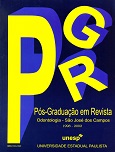Estudo in vitro da qualidade de superfície radicular após o uso de três tipos de instrumentos indicados para raspagem e aplainamento
DOI:
https://doi.org/10.14295/bds.1999.v2i2.48Abstract
O objetivo deste estudo foi avaliar comparativamente a qualidade da superfície radicular após o uso de três tipos de instrumentos indicados para raspagem e aplainamento radicular. Utilizou-se trinta dentes unirradiculares extraídos devido ao comprometimento periodontal. Para este estudo foram utilizados três grupos de dez dentes sendo que cada grupo foi tratado com um tipo de instrumental: manual, rotatório e ultrasônico. Para avaliação foram utilizados um microscópio eletrônico de varredura e um aparelho para medição de rugosidade superficial. Os resultados demonstraram que os instrumentos manuais conseguiram uma superfície mais uniforme e com um menor dano a estrutura remanescente, em compensação os instrumentos ultrasônicos abrangiam uma maior área de ação em relação aos outros instrumentos, tendo em vista que todos conseguiram remover os cálculos retidos na superfície radicular
Downloads
Downloads
Published
How to Cite
Issue
Section
License
Brazilian Dental Science uses the Creative Commons (CC-BY 4.0) license, thus preserving the integrity of articles in an open access environment. The journal allows the author to retain publishing rights without restrictions.
=================




























